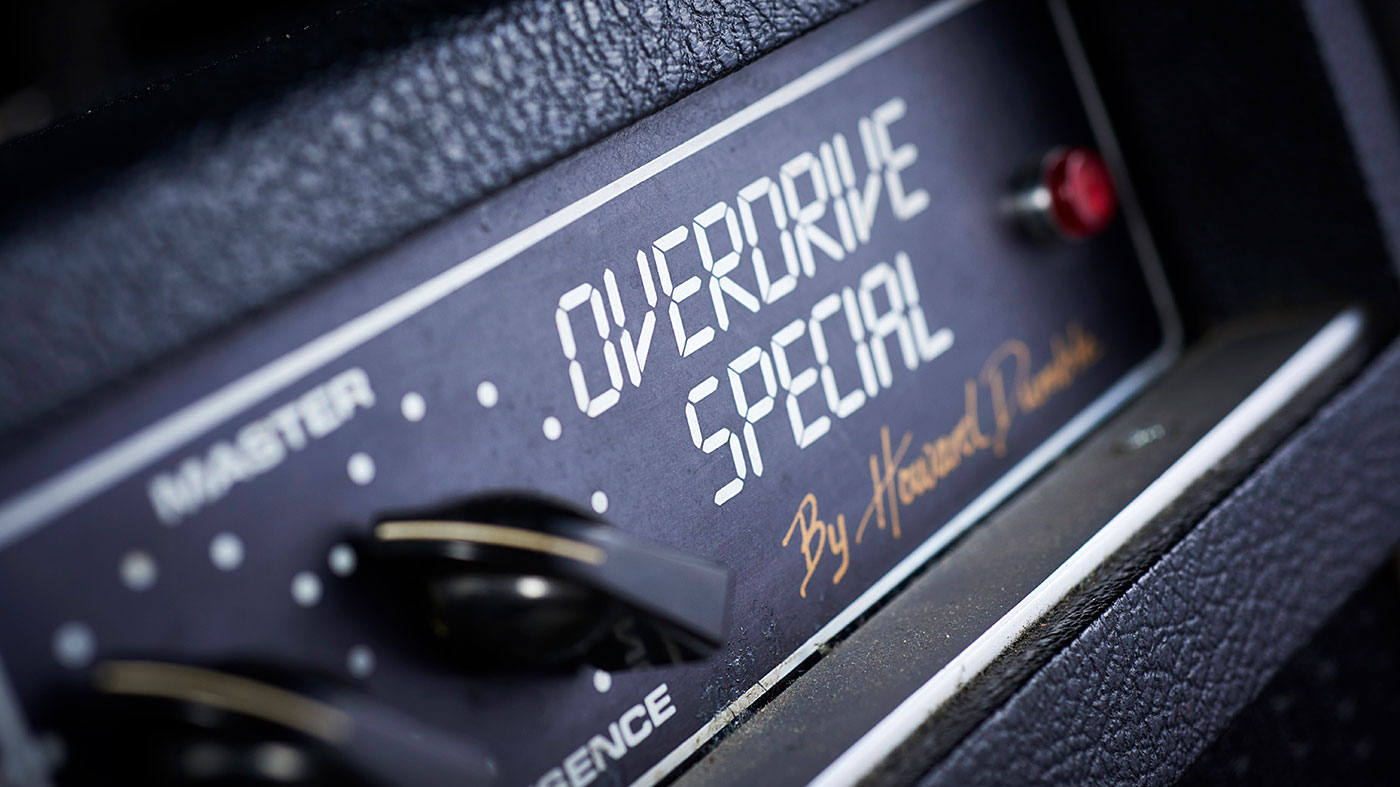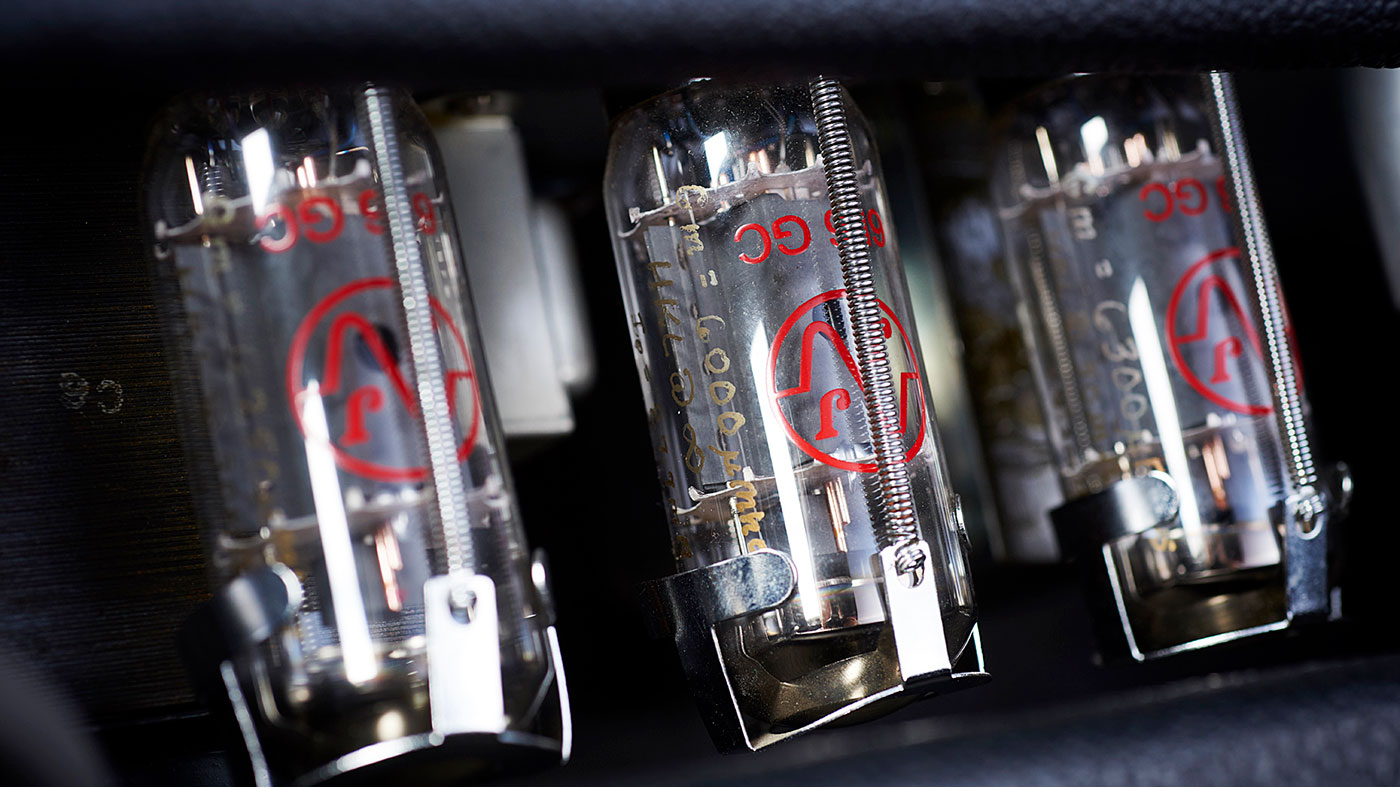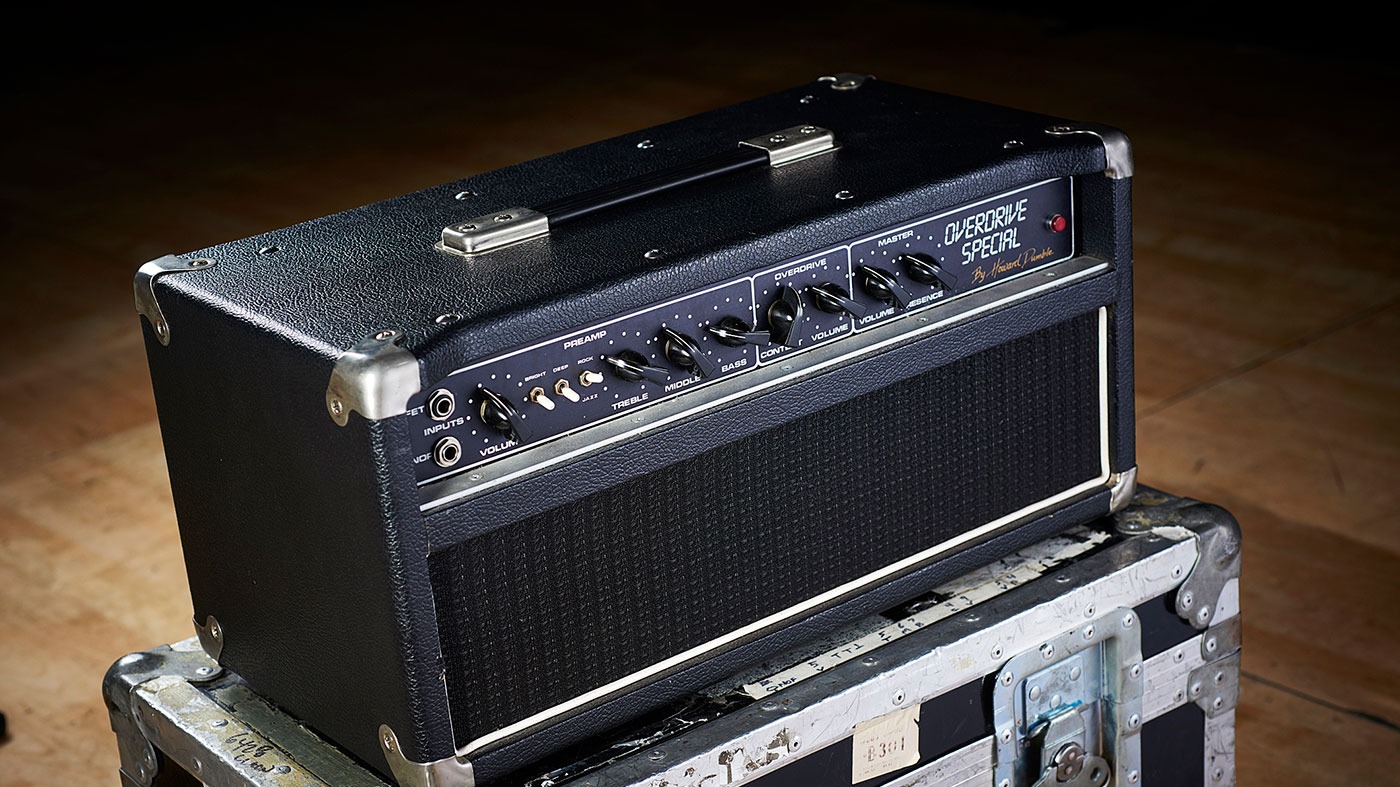
Introduction
As one of the true pioneers of boutique amplifiers, Alexander Dumble forever changed the tonal landscape of guitars in the 1960s - and with little more than 300 of his amps in existence, they remain the Holy Grail of tone. Here, Simon Law examines the Overdrive Special, with some help from his friend and colleague Robben Ford…
In a recent feature, I discussed how some of the biggest names in guitar playing history have invented their own unique guitar tones - sometimes very much by accident, coincidence or maybe something more. The name Howard Alexander Dumble may not mean much to the man on the street, but the amplifiers this gentleman has produced over the last 50 years have gone on to gain almost biblical status among us tonehounds.
Dumble's name will go down in tonal history and people will ask, ‘Have you tried one?’ To which most, unfortunately, will say no
I, myself, have been almost obsessed with the Dumble story since the mid-1980s. Here, I present to you the Dumble Overdrive Special - and not just any old Dumble. This is one of a pair that belongs to one of the legends in Dumble’s story, Mr Robben Ford.
Both Robben Ford and Alexander Dumble (he dropped the name Howard in favour of his middle name) grew up in the Bakersfield area of California. At this time, the West Coast of the US was an absolute melting pot of music - and musicians who would gather from all over the world. Alexander’s own family was hugely musical and from a very young age his interest in musical instruments and electronic equipment would throw fuel on the fire of his passion for rock ’n’ roll and, most importantly, the electric guitar.
Alexander started producing amplifiers in the early to mid-1960s, and by the end of the 70s he had built amps for some of the very biggest names in guitar history, including David Lindley, Jackson Browne, Lowell George of Little Feat and Bonnie Raitt. Later, he would also go on to build amps for Larry Carlton, Stevie Ray Vaughan, Eric Johnson and, most importantly to this feature, Robben Ford.
Alexander was, and is, no slouch on the guitar. People who have heard him say that he’s a most accomplished player. This guy actually played in a band called Captain Speed who opened for Jimi Hendrix. He has unwittingly gained absolute legendary status in the guitar world. This is a man with one goal: to make the finest, most responsive guitar amplifiers ever created.
He never wanted to be a hugely successful businessman or, heaven forbid, a household name. We must remember that he’s only produced around 300 amplifiers, and yet to this day and for ever more, guitarists will whisper the name “Dumble” in dimly lit backstage areas, or type it into a search bar on an internet forum. His name will go down in tonal history and people will ask, ‘Have you tried one?’ To which most, unfortunately, will say no.
If I could keep one of Robben's Dumbles, it would be this one… but it would cost me in excess of £100,000
While on tour, Robben and I have spent many a happy hour in a van or tour bus discussing guitars, amplifiers and, most notably, Robben’s Dumble amplifiers. His most famous amp is his Tan Dumble (serial number 102) bought from Alexander in around 1983. The pictures here feature Robben’s second amp, one that he bought from Alexander around 1993.
To my ears, they are both slightly different. The Tan one has a more pronounced treble response and strong midrange, whereas this black head has an overall warmer tone with a gentle scoop in the midrange. If I could keep one of these amps, it would be this one… but it would cost me in excess of £100,000 and, of course, neither amp is for sale!
Robben joins me in conversation here to discuss how, over the years, he has forged a bond with Dumble that goes beyond mere friendship; they are tonal comrades. When Robben describes a sound, Alexander knows exactly what he means and how to achieve it. And the story of how this all came about is a little mystical in itself…
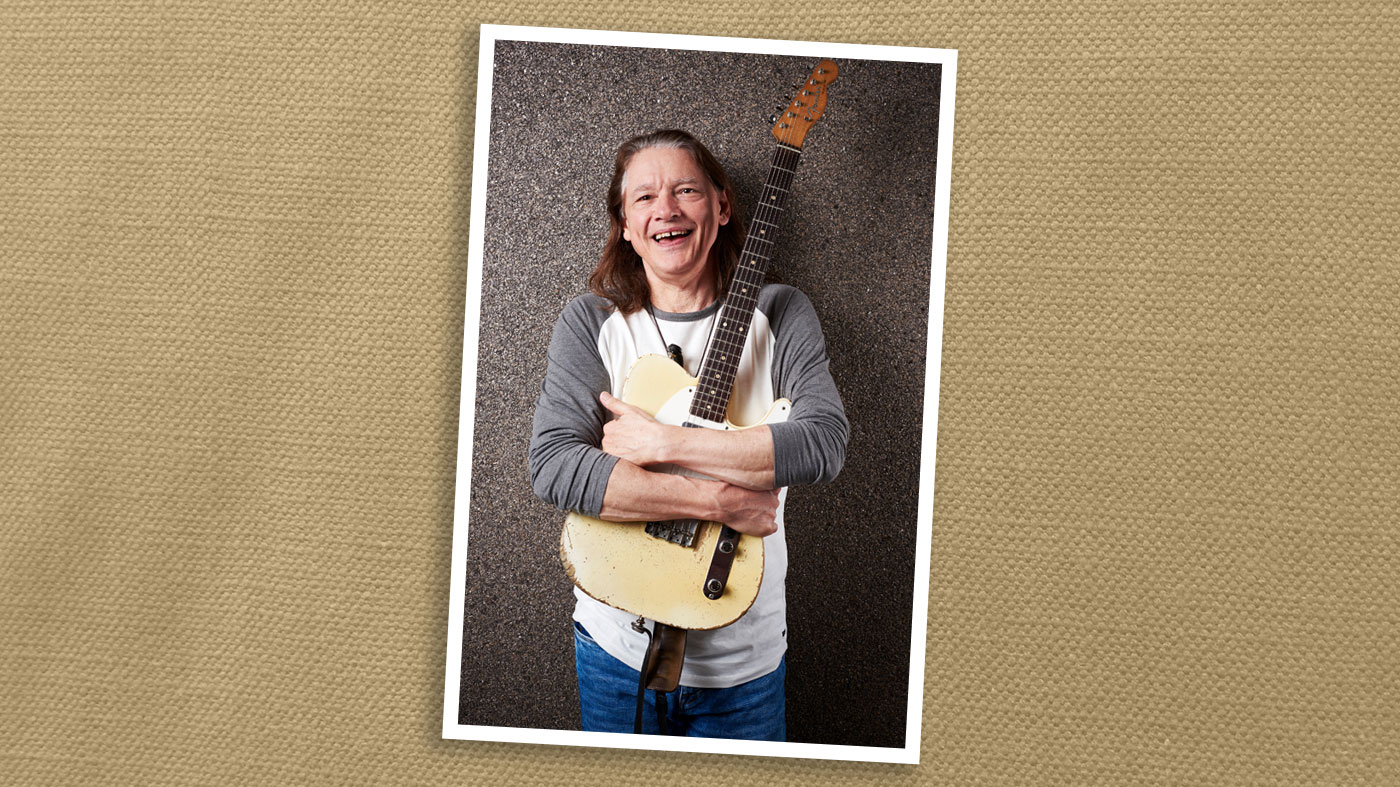
Stumbling on Dumble
Did you have any involvement with Alexander Dumble prior to him making an amplifier for you?
“I have a vague recollection of meeting him in a small club in Palo Alto, California, when I was playing with my brothers’ band, The Charles Ford Band. Alexander has since told me we definitely met there and he introduced himself to me.
He told me he’d got the idea to build the Overdrive Special from listening to me play through a 60s piggyback Fender Bassman and cabinet
Robben Ford
“We chatted for a while and he told me he’d got the idea to build the Overdrive Special from listening to me play through a 60s piggyback Fender Bassman and cabinet - I’ve always been very proud of that. I think it might have something to do with the really warm relationship we both have. I consider him a really close friend; I mean, like family.”
When did you first get the chance to actually play through a Dumble amp?
“The first time I played through one, having not met him, [it] belonged to a guy called Andy Brauer, who had a little shop on Lankershim Boulevard in North Hollywood, and he rented out gear to musicians.
“I don’t remember how I met Andy, but I knew he had an Overdrive Special and I would rent it from him for gigs. I had no amplifier that I really liked for what I was doing at the time. It was a while before I finally had enough money to afford one, but when I did we finally got together and he designed my amp.”
So, Alexander got the idea to build the Overdrive Special from listening to you, but you still didn’t own one yourself?
“That’s right. He’d had the idea years before I’d bought an amp from him. He got the idea for the Overdrive Special in maybe 1971 or ’72 after hearing me play, and he would come and listen to me often back in those days. We were playing the Santa Cruz area a lot at that time, and that’s where he was based by then. In fact, we both moved to Southern California at pretty much the same time.”
And this was all still way before you’d had your own amp built?
“Yeah, absolutely. It was, like, a whole 10 years earlier than that.”
That’s amazing. It’s not how I’d have imagined it at all - I’ve always thought you were one of the first owners of those amps. How were those early Dumbles in comparison with what you had been using up until that date?
I really feel that a 100-watt Dumble amp is my amplifier and is very important
Robben Ford
“They had way more clarity, more power. Of course, these were 100-watt amps and I had been using Fenders that were, like, 40 or 50 watts - so a lot more ‘headroom’, I guess you’d call it. I mean, they had the 50-watt switch on there and my own amp has that switch and I quite literally don’t like it.
“Most of the combos were 50 watts and I never played through a combo that I liked, so I really feel that a 100-watt Dumble amp is my amplifier and is very important. The speakers also can make a big difference. I don’t remember what cabinet I was using at that time; it may have been a Dumble also.”
Going back to the early days when you were using the Fender Bassman, were you using any additional boost pedals or overdrive pedals at the time?
“Nope, just straight into the amp - no pedals, no reverb either - cranked way up.”
Dry and loud!
“Yeah, I know! I cant even believe it myself. I mean, we were young, we didn’t know what we were doing, everything was pure luck. It was pure luck I even had that amplifier. Would you like to know the story of how I acquired that [Bassman] amp? In junior high school I had a terrible little group, four of us. Nobody could really play. I played bass, saxophone and sang.
“The other guitar player’s father was head of a savings bank in Ukiah, California, so they were pretty wealthy by our standards. The mother, who had to put up with all our rehearsals, would come into our room and talk to us. One day she decided to take her son down to San Francisco and buy him whatever he wanted for the band. He picked out a Fender Bassman for me and a Bandmaster for himself.
“At this point, I had bought my first cool guitar, a Vox violin bass, he had a Vox six-string guitar. We had these two amplifiers and we were in junior high school! I kept the amp at my house all the time and after we’d finished school and gone our separate ways I kept the Bassman amplifier. It really was by complete luck that I had that amp that lead onto the inception of the Dumble Overdrive Special.”
If that had been any other amplifier you’d acquired, then, the Overdrive Special may never have been made?
“That’s right.”
It’s crazy to think it may never have happened. It’s similar to the story of why Jimi Hendrix ended up using Marshall amps: if he’d never been introduced to his drummer, Mitch Mitchell, who had been having drum lessons at Jim Marshall’s music shop, then Jimi’s relationship with Marshall amps may never have happened, either. He may never have conjured up the tones he did, and that could have been the same with you, too…
“It’s true - very different.”

Loud, not proud
You mentioned earlier on about the importance of speakers. Alexander was mainly fitting Electro-Voice (EV) speakers at the time - did you ever use EVs?
“I used EVs in the beginning in a 2x12-inch cabinet I asked him to build for me. It would have been at his suggestion, because at that time I knew nothing about speakers. It was also Alexander who suggested the Celestion 65s, because I’d told him, ‘Man, I’m just so loud!’ And they’re also so damned heavy. I needed to get my volume down, but I do like the sound of the EV speakers. I still think they’re the best speakers I’ve ever heard, but they’re just too loud.”
And too heavy. Leading up to the time of you getting your amplifier, who were you playing with then?
Along the way, as he’s found ways to improve his amps, he would have mine back to make these improvements
Robben Ford
“I’d been playing with Joni Mitchell and then George Harrison. I’d been using a Fender Twin fitted with Altec Lansing speakers. I’d saved up some money and was pretty much doing nothing for a year while living in Boulder, Colorado. I started playing with Joni again for a while and moved back to California. This was towards the end of the 70s. I had also landed my record deal, so I decided to buy a Mesa/Boogie. I’d heard Larry Carlton play through one and it sounded really great. However, I did not get on with it. I recorded my first album with everything but the Boogie.
“Steve Cropper produced that record [The Inside Story], so I was maybe using a tweed amp of his and an Ampeg. I was even using an early Roland amp. I was just trying everything to find my thing. I was really searching.
“The Boogie was then, again, too loud - you had to crank it way up to make it sound good. The Yellowjackets band was also coming together at that time, so I carried on renting the Dumble from Andy Brauer until I could afford my own in maybe ’81 or ’82.”
Tell us about the process of purchasing the Dumble. Did you just order it or did you go to his workshop for a ‘fitting’ of sorts?
“I only remember an initial meeting of what I wanted, but not a lot was said. He was already building Overdrive Specials and he knew my sound and my playing. I was already in love with the amp I had been renting, so he just built it. I had a single 12-inch speaker cabinet I was using at the time with an EV or something in there, and I was going to use that with my new amp.”
When you received your new amp, did you bond with it instantly or did it have to be modified in any way?
“I think maybe a few minor changes were made. One thing we did work on was the overdrive - yeah, we made some tweaks to the overdrive, but basically it’s stayed the same. Along the way, as he’s found ways to improve his amps, he would have mine back to make these improvements on [it]. He would get excited about improvements he would make to the amp, but, generally, things stayed much the same.”
How important do you think that amplifier has been to you over the years - to your sound and to your growth as a player?
It’s incredibly muscular. It makes it very hard to play anything else after that. I don’t like having to adapt to other amplifiers now
Robben Ford
“Yeah, well, one thing I find about the Dumble amplifier that is unique is that it’s incredibly muscular. I think you know exactly what I mean by that. It does affect the way you play; you have to become more ‘muscular’ as a player to take advantage of the amp’s muscle, and that has definitely affected the way I hit the strings and the way I play a note. It’s all integrated. It also makes it very hard to play anything else after that. That’s how it feels to me, anyway. I don’t like having to adapt to other amplifiers now.”
To players of your calibre, the smallest differences in your equipment can have a huge impact. If you get a crappy backline amp one night, how can you be expected to do ‘your thing’? The Dumble seems so instantly responsive under your fingers - it’s almost scary! It makes you want to become a better guitar player when playing through a Dumble, as there’s nowhere to hide. It has such a touch-sensitive quality about it, it can be quite unnerving…
“Yeah, sure. Even recently, I’ve discovered how much these amps are a part of my sound. You were playing through my amp in soundcheck and I could hear ‘my sound’.”
Have you ever tried any of the amps that are trying to replicate the Dumble sound? If so, what have you thought of them and do they fall short?
“Yeah, I have. I’ve tried Bludotone and Two‑Rock - although they’re quite different now - but they all fall short. I mean, they get maybe 70 per cent there, but that extra 30 per cent is enormous. It’s way too much for me.”
What is Alexander like to deal with? You get to hear such fabled stories about his eccentric character!
“Alexander and I have known each other for a long time, and he’s a brilliant guy, but there can always be awkward moments. It’s like having an awkward moment with Miles Davis - you always forgive it, because he’s brilliant. What one person can bring to the party is so much more important than one awkward moment. I’m sure other people have had difficult dealings with him - and Alexander is way less forgiving than me - but we have always had a cool relationship. He’s my friend.”
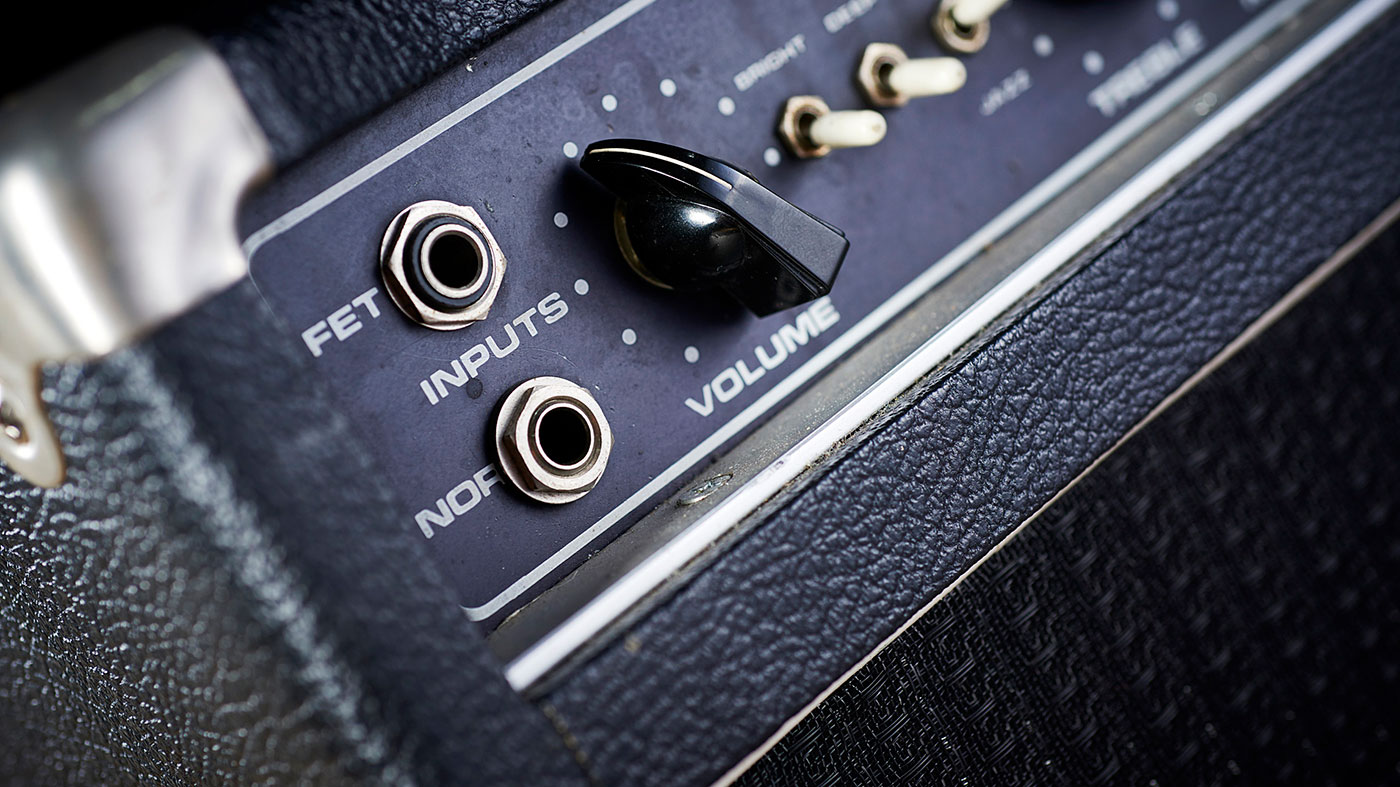
Inputs
The two inputs are marked FET and NOR (MAL). FET stands for ‘field effect transistor’ and, broadly speaking, is a solid-state, buffered input.
Mr Dumble added this so players could match their lower output guitars to their higher ones, single-coil versus humbuckers, etc. In this instance, the FET input is never used.
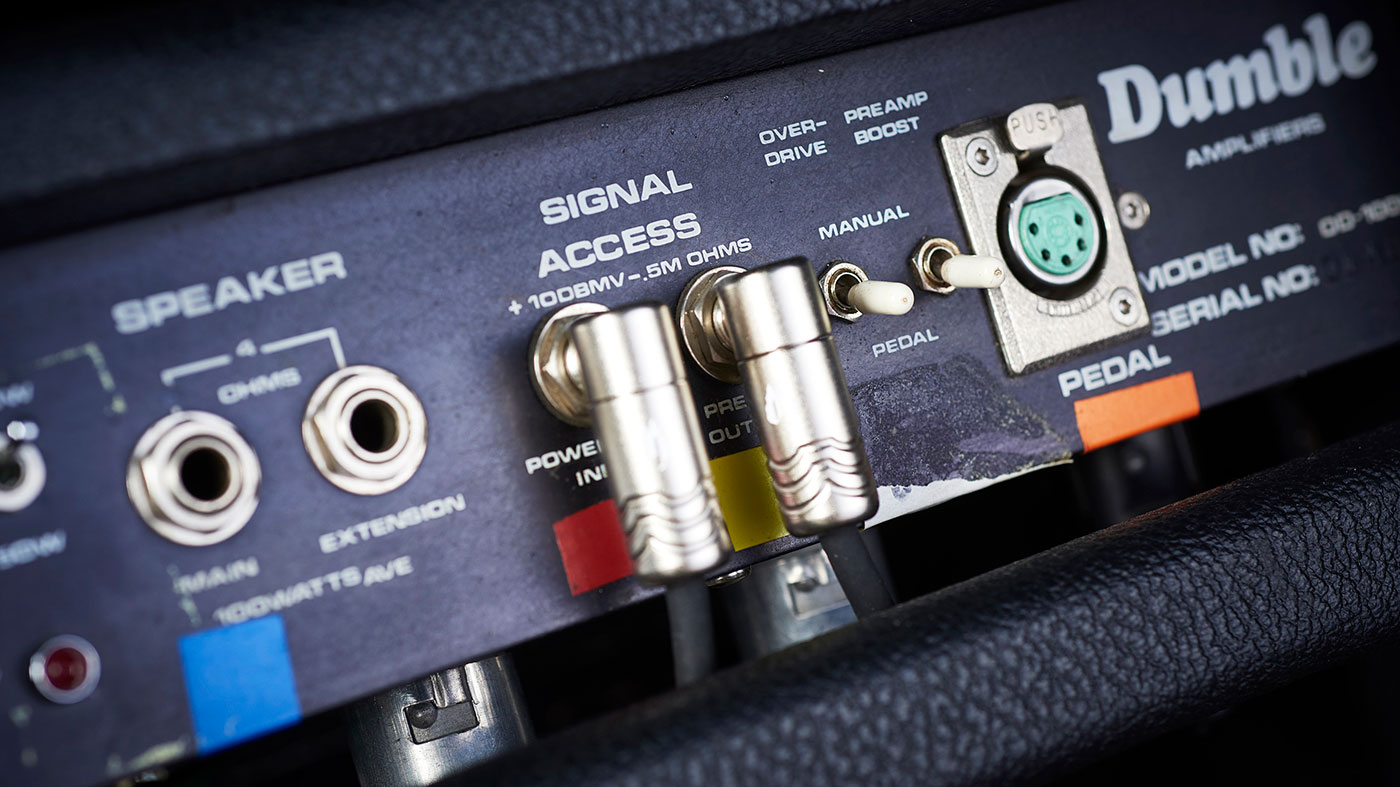
Signal Access sockets
The rear of the amp features a pair of ‘Signal Access’ sockets; these are effect send and return sockets for use with the Dumblelator device, which enables the player to match external effects units to the amplifier perfectly.
Robben rarely uses these now, but he has used the Dumblelator to sync with a TC 2290 Delay unit. If the sockets are not used it seems to sound nicer with a short patch cable inserted.
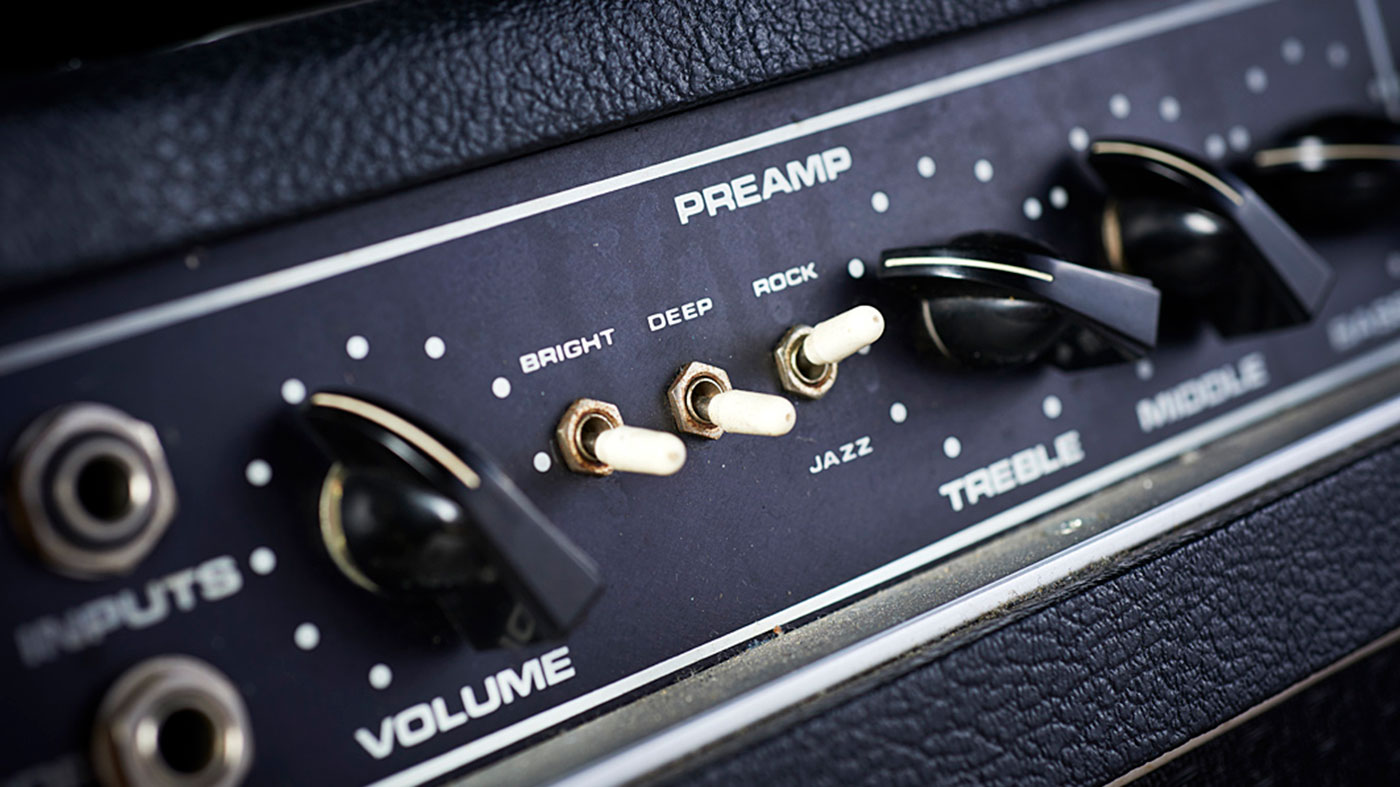
Presets
The front panel also offers the player some interesting presets: Bright on and off, Deep on and off, Rock and Jazz. Robben’s playing and attack have plenty of natural brightness, so extra is never needed.
The Deep switch can get way too big if used at loud volumes; the Rock and Jazz gives the player the choice of either dead clean (Jazz) or big and dirty (Rock).
